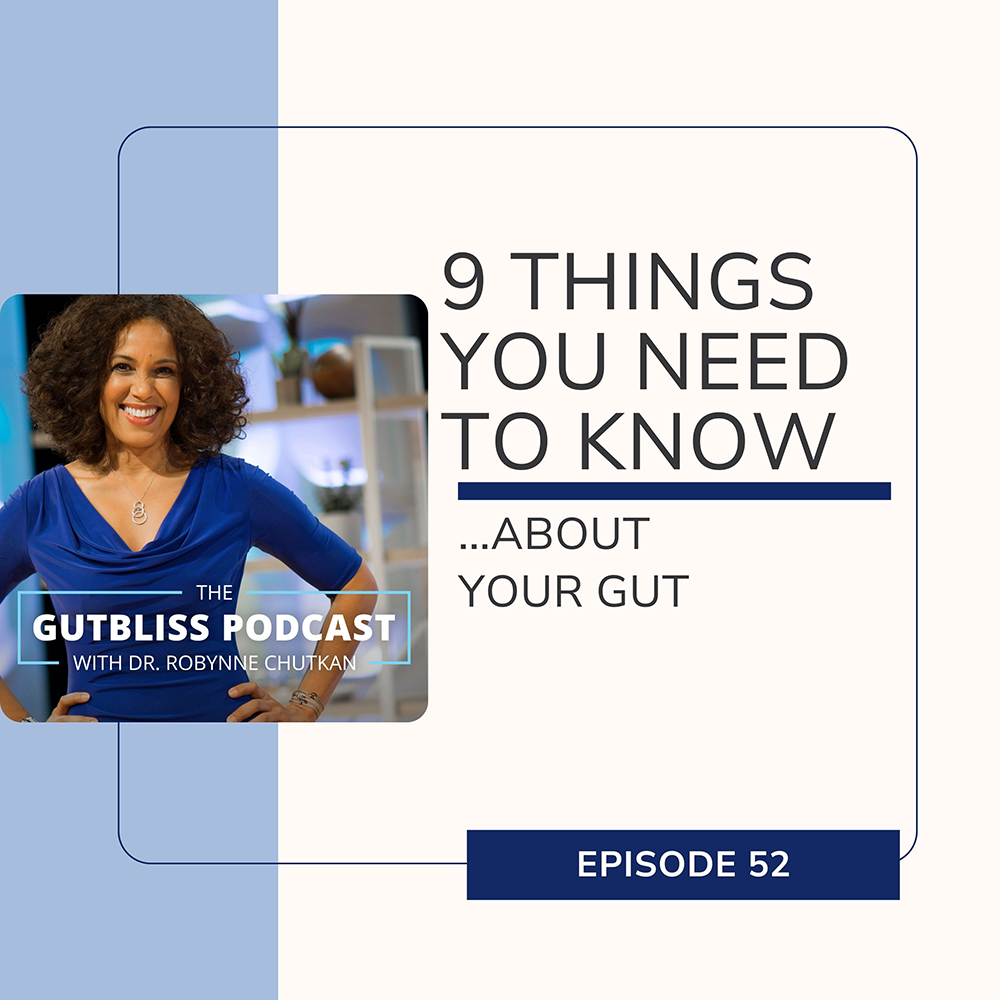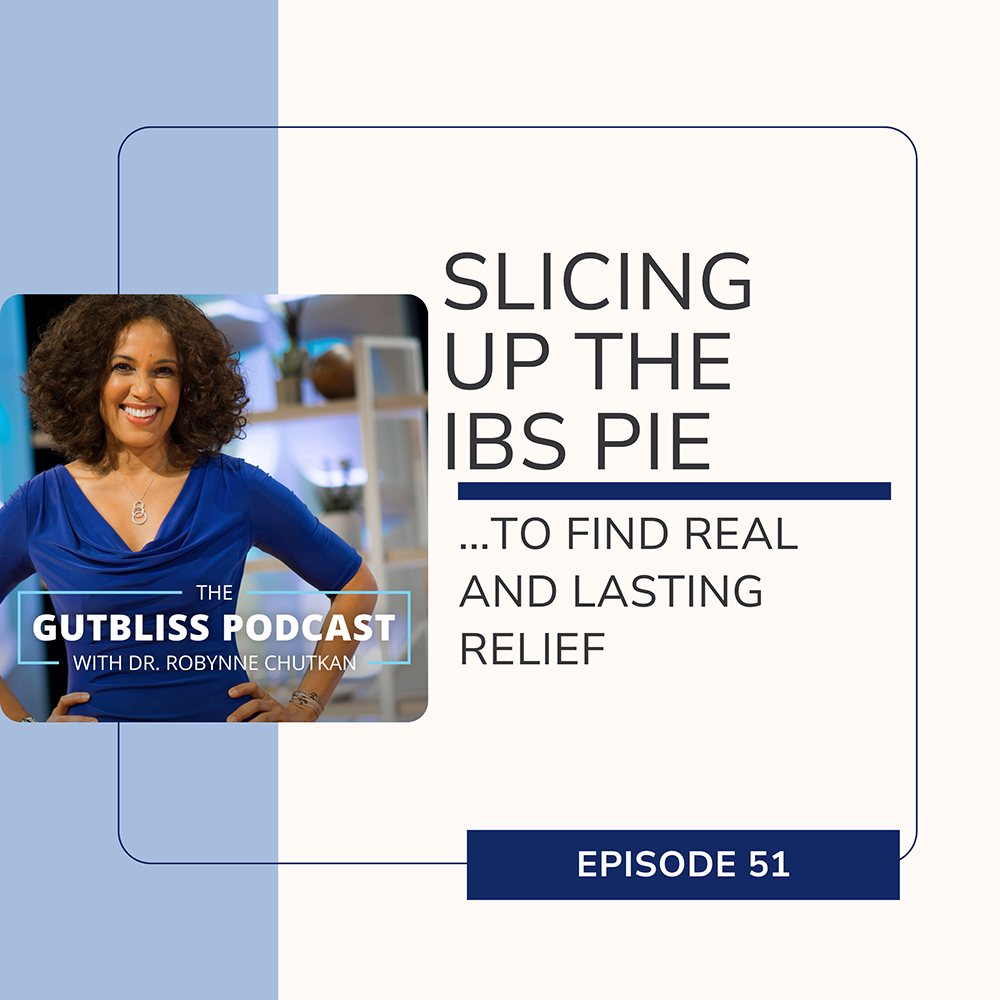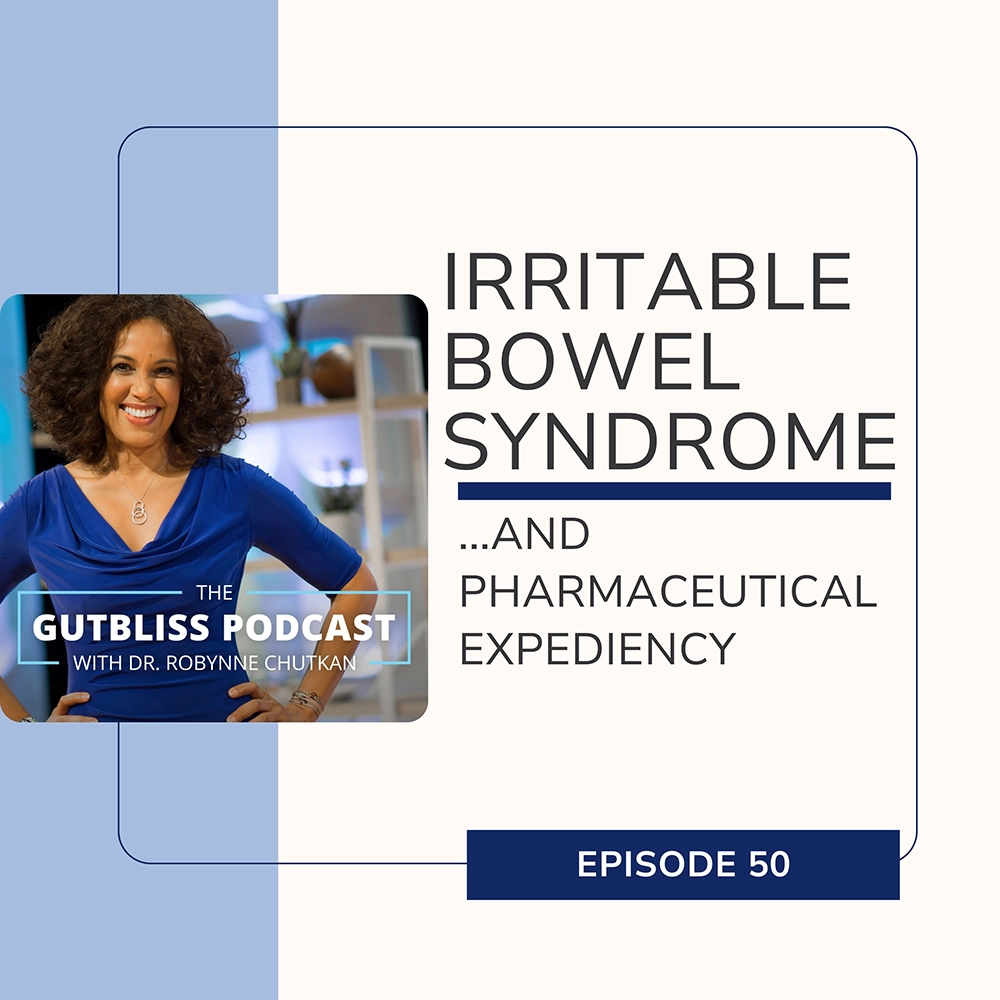The gallbladder is often described as a nonessential organ, but our digestive system is carefully and thoughtfully designed, and there are no spare parts that can be removed without consequences – because every part of the GI tract serves a purpose. Can you live without your gallbladder? Absolutely, but there is a very good chance that you could end up more symptomatic after surgery than you were before. I’m going to be explaining why in this episode.
Thank you for being a part of our community! For the latest in digestive wellness go to https://gutbliss.com/ and follow us on Instagram for more gut health info.
The gallbladder is often described as a nonessential organ, but whether you believe in creationism or evolution, there is no question that our digestive system is carefully and thoughtfully designed, and there are no spare parts that you can remove without consequences – because every part of your GI tract serves a purpose. Can you live without your gallbladder? Absolutely, but there is a very good chance that you could end up more symptomatic after surgery than you were before. I’m going to be explaining why later in this episode.
So what does your gallbladder actually do, and if almost a million people in the United States have theirs removed each year, how vital an organ can it be? Your gallbladder is located under your rib cage on the right side of your abdomen, just below your liver. It’s a small sac about the size and shape of a pear, and its main job is to store and release bile, which is made in the liver. Bile helps with the absorption of fat by emulsifying it—basically mixing the fat with the watery secretions of the intestines, much like dishwashing liquid helps dissolve grease on plates. Like most of our organs, gallbladder function is based on feedback loops. A high-fat meal causes more bile release, and a low-fat meal causes less. It’s straightforward and works well when you eat a reasonable diet and avoid too much saturated fat and other cholesterol-laden foods. What’s too much? Cottage cheese with a latte for breakfast, turkey and provolone for lunch, and steak, chicken, or pasta for dinner. More on what kind of diet you should be eating – and avoiding – when we come back.
Cholesterol is only present in animal products. If you are eating lots of animal products – not just meat, chicken, fish and seafood, but also dairy, which is actually the number one contributor of cholesterol in the American diet – if you’re eating a lot of those foods, the cholesterol in your diet can crystallize in the bile, causing gallstones. And here’s the thing: most of us don’t need to follow complicated guidelines about how many grams of saturated versus unsaturated fat to eat—our bodies give us all the feedback we need: when things start to go wrong with our gallbladder, it’s usually a sign that we need to make some dietary changes.
The food industry has gone to great lengths to set up complex hierarchies of good, better, and best when it comes to cholesterol, with fish at the top of most people’s pyramids and red meat at the bottom. But the truth is, there’s not much difference between beef, chicken, or fish when it comes to cholesterol. A small serving (about four ounces) of:
- beef sirloin has 89 milligrams of cholesterol
- white meat skinless chicken has 85 milligrams of cholesterol
- a pork chop has 85 milligrams of cholesterol
- salmon has 63 milligrams of cholesterol
The idea that one kind of flesh is significantly better for us than another leaves us scrambling for chicken breast over hamburger when we really should be thinking about plants versus animals. Simply increasing the amount of plants in your diet, especially the green leafy kind, and cutting back on animal products will usually take care of whatever gallbladder issues you have, and it will also give you a healthy cholesterol level, and prevent a bunch of other problems, including heart disease and cancer. And the great news is you don’t have to be a vegan or vegetarian, you just have to eat more plants and less animals. The Academy of Nutrition and Dietetics recommends that we consume less than 300 milligrams of cholesterol daily. But the difference between an 85-milligram chicken breast and an 89-milligram piece of sirloin pales in comparison to the fact that fruits, vegetables, nuts, seeds, beans, yams, potatoes, rice, and grains have zero cholesterol.
Gallbladder problems can be divided into three main categories:
1. Acute gallbladder infection or inflammation (acute cholecystitis)
2. Chronic gallbladder dysfunction (cholecystopathy)
3. Gallstones
Gallstones can travel from your gallbladder into your bile ducts that are connected to the gallbladder, and this can cause a blockage that disrupts the flow of bile. When this happens, your gallbladder can become swollen and tender, like a big pus-filled pimple—a condition called cholecystitis. Fever, severe pain, or unstable vital signs raise the concern that your gallbladder may burst open, and surgery to avoid that possibility is usually the best option for severe acute cholecystitis.
If a gallstone is blocking your bile duct but you’re not that ill (you don’t have fever or severe pain and your vital signs are stable), it’s possible – and maybe even likely – that the gallstone will pass through the bile duct on its own and get eliminated in your stool. But if that doesn’t happen and the gallstone is stuck in your bile duct, you may need a procedure called an ERCP (endoscopic retrograde cholangiopancreatography) where the bile ducts are swept clean with small pipe cleaner–like wires. If you are having frequent episodes of gallstones that are obstructing your bile duct, they may recommend removing your gallbladder, but I want you to understand that just because you have an obstructed bile duct does not mean you have to have your gallbladder taken out. It’s perfectly reasonable if you are not severely ill to do the ERCP procedure and leave your gallbladder in place.
Now here’s what you really need to know about gallstones: if I lined 100 random people up against a wall and did an ultrasound on them, between ten and fifteen of them would have gallstones. Of that 10 to 15 percent of the population with gallstones, the vast majority will have no symptoms whatsoever that are attributable to those gallstones. They may have nonspecific digestive symptoms, as many of us do from time to time, like bloating, nausea, or mild abdominal discomfort, but most people with gallstones have no symptoms that are a direct result of the gallstones themselves – what we call “silent” gallstones. And if you’re one of those people with silent gallstones, your risk of having an acute gallbladder attack is only about 1%. But all too often these nonspecific digestive symptoms are wrongly attributed to the gallbladder, which is innocently going about doing its job, not posing a threat to anybody. When the gallbladder is removed in that setting, the symptoms that were never caused by the gallbladder in the first place are clearly still going to be there after surgery. And now you’re also going to have all the symptoms of not having a gallbladder which I’m going to be discussing shortly.
But what if your symptoms are caused by your gallbladder, and you’re having them after every meal? In the absence of a clear need for surgery, like acute cholecystitis, or recurrent episodes of bile duct obstruction from gallstones, or severe symptoms from a poorly functioning gallbladder; if you are not in one of those situations, I recommend at least trying to hold on to your gallbladder. Here’s why: symptoms like bloating, abdominal discomfort, and nausea may not be resolved by simply taking out your gallbladder, because even when it’s functioning poorly and causing symptoms, removing it doesn’t address the fundamental problem behind why it’s not working.
Remember, your gallbladder doesn’t make bile; it just stores it for the liver. If the problem is abnormal bile production, then the factors contributing to that abnormal production need to be addressed. In addition to too much fat, other causes include overconsumption of carbohydrates leading to imbalanced carbohydrate and lipid metabolism, rapid weight loss, including from weight loss drugs like Ozempic, diabetes, alcohol, birth control pills, hormone replacement therapy. I do want to mention that there are some diseases like sickle cell anemia that can cause gallstones irrespective of diet or medications, because of pigment stones that develop as a result of the disease.
But the point I want to emphasize here, is that removing your gallbladder without addressing potential contributing factors is unlikely to solve your problem, as demonstrated by the fact that around 20% of people have recurrence of symptoms after their gallbladder is removed. I see so many patients in my office who have had their gallbladder removed unnecessarily and are now really struggling. And I always say to them “I wish you had come to see me before you had your gallbladder removed!”. So if you know somebody who has gallbladder issues, please send them a link to this episode.
So many people find out after surgery that their gallbladder was not the cause of their symptoms. Conditions like SIBO, acid reflux, H. pylori infection, stomach ulcers, gluten sensitivity, lactose intolerance, delayed stomach emptying, and parasites can all mimic the signs and symptoms of a poorly functioning gallbladder, causing non-specific symptoms like nausea, bloating, and abdominal pain. By far the biggest problem I see after surgery is the continued presence of the original symptoms, reported in some studies in almost half of all patients who have their gallbladder removed. Even worse, in addition to your original symptoms, which may have been mistakenly attributed to your gallbladder, new symptoms are likely to develop when the main organ responsible for fat absorption is now gone. Without your gallbladder to store and secrete just the right amount of bile after meals, there’s either too much or not enough bile being circulated. Severe bloating and diarrhea after eating is what most of my patients complain of after their gallbladder is removed, but some people also report constipation or nausea. When we come back – why is gallbladder surgery so common?
Several studies (including a study of 54,000 gallbladder surgeries in Pennsylvania) have found that the number of gallbladders removed in people with minimal or no symptoms more than doubled with the advent of laparoscopic surgery in the 1990s. Before minimally invasive surgical techniques like laparoscopy, removing the gallbladder was a big surgery that involved an extended stay in the hospital and lots of potential complications. Once surgeons were able to take out your gallbladder quickly via laparoscopy – and with fewer complications – we saw this explosion in the number of gallbladders being taken out. And clearly the amount of gallbladder disease in the population didn’t just suddenly double! Most of the rise in gallbladder surgery has been in people with what we call “soft indications,” like a poorly functioning gallbladder or asymptomatic gallstones rather than people with an acutely infected gallbladder or severe dysfunction.
But is surgery to prevent a severe attack before it occurs a good idea? Well-meaning doctors might show you ultrasound pictures of stones in your gallbladder. They might tell you a story or two of a patient who died from massive infection because a gallstone slipped out of the gallbladder into their bile duct and caused a blockage. But the rock solid statistic, published in the New England Journal of Medicine (NEJM), is that waiting and having emergency surgery if your bile duct becomes blocked is actually SAFER than having elective surgery to prevent a blocked duct in the future. More people die from elective gallbladder surgery than from emergency surgery!
And that statistic validates the best medical advice I can give you, which is “if it ain’t broke, consider not fixing it”. Careful observation—that is, you and your doctor paying close attention to any change in your symptoms—is often a great option, and as the NEJM article illustrated, having surgery now for something that could go wrong in the future may not be the best decision. We have seen examples throughout history of tonsils, uteruses, and thyroid glands being unnecessarily removed with good intentions, but the results are often a decline in your health that no amount of medication can fix. Our focus should be on figuring out where things went wrong and why and addressing the underlying problem – which in the case of the gallbladder is often diet – instead of just taking out the organ and hoping for the best. You need your organs. Try to hold on to them for as long as possible. Elective surgery for silent gallstones is rarely necessary, and it’s almost never a good idea.
If you think your gallbladder may not be working quite right, you should definitely see a doctor and get an ultrasound, and a HIDA scan which is a test of gallbladder function, any other tests or blood work your doctor recommends. If your problems are more serious—fever, severe pain, tenderness, abnormal lab values—and you’re told that your gallbladder needs to come out, that’s probably the right advice. But if you’re one of the millions of people with non-specific symptoms like bloating, feeling full after meals, mild nausea, and abdominal discomfort, you need to consider the possibility that your gallbladder itself may not be the culprit, even if you have gallstones, and that the problem may be elsewhere. And even when it seems like your gallbladder is the problem, make sure it’s not an innocent bystander, caught up in a tangled web of other issues, like too much high-fat foods and not enough physical activity. Changing what you eat and how you live is hard, but it’s so worth it, particularly when it allows you to hold on to critical digestive organs like your gallbladder.
Before you have surgery to remove your gallbladder, I highly recommend asking your doctor these 2 questions:
1) How certain are you that the symptoms I am having are being caused by my gallbladder?
2) Is it possible for us to keep a close eye on my symptoms, and make plans to remove my gallbladder down the road if things change or get worse?
And I hate to say it, but you may have to push a little bit because this is how a lot of surgeons make a living, by taking out gallbladders – even when they don’t necessarily need to come out.
I want to leave you with 3 takeaways for gallbladder issues:
1. Take it bite by bite: start with adding one additional fruit and one additional vegetable a week. Not only are these foods cholesterol-free, but some of them can actually help to lower your cholesterol because substances called sterols in plants block the absorption of cholesterol in the body, and studies show that people who eat a plant-based diet have much lower cholesterol levels and fewer gallbladder problems.
2. Trim the fat: dairy is quick, convenient, and delicious. It’s so easy to grab some cheese and crackers or a Greek yogurt, drink a latte or cappuccino, or sprinkle some Parmesan or feta on your salad. But the amount of dairy you’re consuming can really start to add up. Dairy is the biggest contributor to fat in the American diet, which is why even vegetarians who eat a lot of dairy often end up with gallbladder problems.
3. Get moving: a European study published in 2010 showed that people with gallstones who were physically active had fewer symptoms than their sedentary counterparts, and the overall risk reduction for gallbladder problems was 70% in the most active group. Studies also show that exercise can both prevent gallstones from forming and reduce symptoms if you already have them.
So that’s it for this edition of the Gutbliss Podcast on everything you need to know about what can go wrong with your gallbladder.









